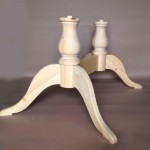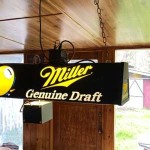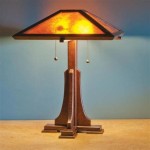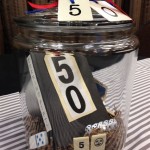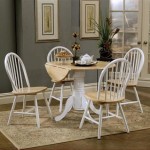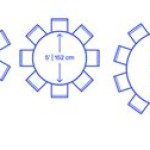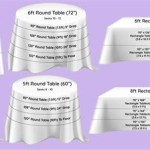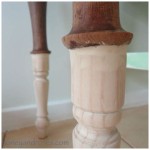Kettler Ping Pong Table Touch Up Paint: Maintaining Optimal Play and Aesthetics
Kettler ping pong tables are recognized for their quality construction, durable materials, and superior playing surface. However, even with diligent care, the table's surface can be susceptible to minor scratches, nicks, and abrasions over time. These imperfections, while often cosmetic, can potentially impact the consistency of ball bounce and detract from the overall aesthetic appeal of the table. Addressing these blemishes promptly with appropriate touch up paint is crucial for preserving both the playability and visual presentation of the Kettler ping pong table.
The availability of specific touch up paint designed for Kettler tables simplifies the maintenance process. This article delves into the importance of using the correct touch up paint, the factors contributing to surface damage, the proper application techniques, and preventative measures to minimize the need for future repairs. Understanding these aspects ensures the longevity and optimal performance of the Kettler ping pong table.
Understanding the Importance of Using Designated Touch Up Paint for Kettler Tables
The surface of a Kettler ping pong table is engineered with specific properties to ensure consistent ball bounce and ideal playing conditions. The paint used in the original manufacturing process is carefully selected to meet these performance requirements. Using generic paints for touch ups can compromise these characteristics and result in an uneven or unpredictable playing surface.
Kettler touch up paint is formulated to match the original paint used on the table. This color matching ensures seamless integration of the repaired area with the surrounding surface, maintaining a uniform appearance. Furthermore, the specific chemical composition of the designated touch up paint is designed to adhere properly to the table's material, creating a durable and long-lasting repair. Generic paints might not bond effectively, leading to peeling, cracking, or bubbling over time, exacerbating the initial problem.
Therefore, utilizing Kettler-specific touch up paint is paramount for preserving the table's original playing characteristics and maintaining its aesthetic appeal. While alternative paints may appear to be a cost-effective solution, their long-term impact on the table's performance and appearance can be detrimental.
Identifying Causes of Surface Damage and Preventive Maintenance
Several factors can contribute to scratches, nicks, and other blemishes on the surface of a Kettler ping pong table. Understanding these causes allows for proactive measures to be implemented, minimizing the need for frequent touch up paint applications.
One primary cause is the improper storage and handling of the table. When not in use, the table should be stored in a clean, dry environment, preferably covered with a protective cover. This prevents exposure to dust, dirt, and moisture, which can all contribute to surface abrasion. During transportation or movement of the table, it is essential to exercise caution to avoid bumps, scrapes, and impacts against other objects.
Another common source of damage is the use of abrasive cleaning materials. Harsh chemicals, scouring pads, and abrasive cloths can scratch the surface of the table and dull the finish. It is recommended to clean the table regularly with a soft, damp cloth and a mild, non-abrasive cleaning solution. Avoid using excessive force during cleaning, as this can also contribute to surface damage.
The presence of debris on the playing surface can also cause scratches and nicks. Players should avoid placing drinks, food, or other objects directly on the table. Regularly sweeping or vacuuming the playing surface to remove dust, dirt, and debris is crucial for minimizing potential damage. Additionally, ensure that players are using clean ping pong paddles, as dirt and grit on the paddle surface can transfer to the table and cause abrasions.
Furthermore, extreme temperature fluctuations and prolonged exposure to direct sunlight can also damage the table's surface. These conditions can cause the paint to fade, crack, or peel. Storing the table in a climate-controlled environment and avoiding direct sunlight exposure will help prolong its lifespan and reduce the need for touch up paint.
Proper Application Techniques for Kettler Ping Pong Table Touch Up Paint
Applying touch up paint correctly is essential for achieving a seamless and durable repair. The following steps outline the recommended procedure for applying Kettler ping pong table touch up paint:
Preparation: Begin by thoroughly cleaning the damaged area with a soft, damp cloth. Remove any loose debris, dirt, or dust particles. Ensure the area is completely dry before proceeding. Lightly sand the damaged area with fine-grit sandpaper (e.g., 400-grit) to create a smooth surface for the paint to adhere to. Be careful not to sand too aggressively, as this can damage the surrounding area. Wipe away any sanding dust with a tack cloth.
Application: Shake the touch up paint container thoroughly before use. This ensures that the pigment is evenly distributed. If the touch up paint comes with a brush applicator, carefully dab a small amount of paint onto the damaged area. If using a separate brush, select a fine-tipped artist's brush for precise application. Apply the paint in thin, even layers, allowing each layer to dry completely before applying the next. Avoid applying too much paint at once, as this can lead to runs, drips, and an uneven finish.
Drying and Curing: Allow the touch up paint to dry completely according to the manufacturer's instructions. The drying time will vary depending on the type of paint and the environmental conditions. Avoid touching or handling the repaired area during the drying process. Once the paint is fully dry, allow it to cure for the recommended period. Curing allows the paint to harden and bond fully to the table's surface, ensuring a durable and long-lasting repair.
Finishing: After the paint has fully cured, inspect the repaired area for any imperfections. If necessary, lightly sand the area with ultra-fine-grit sandpaper (e.g., 1000-grit) to smooth out any unevenness. Apply a thin coat of clear sealant or varnish to protect the repaired area and enhance its durability. Allow the sealant or varnish to dry completely before using the table.
Color Matching Considerations: Even with designated Kettler touch up paint, slight color variations can occur due to the age and wear of the original paint. To minimize these discrepancies, consider applying a thin layer of touch up paint to a small, inconspicuous area of the table to test the color match before applying it to the damaged area. If the color match is not perfect, you may need to experiment with mixing different shades of touch up paint to achieve a closer match.
By following these application techniques, individuals can effectively repair minor scratches and blemishes on their Kettler ping pong tables, maintaining both the playing quality and aesthetic appeal of the equipment. Proper preparation, careful application, and adequate drying and curing are critical for achieving optimal results.

Mesh Furniture Touch Up Paint In Iron Grey Kettler

Kettler Berlin Pro Outdoor Table Tennis Blue

Kettler Mesh Furniture Touch Up Paint White

Kettler K5 Indoor Table Tennis Plenty Lts

Table Tennis K1 Outdoor Plenty Lts

Kettler Outdoor 15 Ping Pong Table

Kettler Outdoor 10 Table

Kettler Stockholm Gt Indoor Blue Table Tennis Ping Pong Scratch Dent

Kettler Outdoor 10 Table Tennis Official Site

Kettler Tennis Table Indoor Competition 3 0 Ttt Blue Billard

